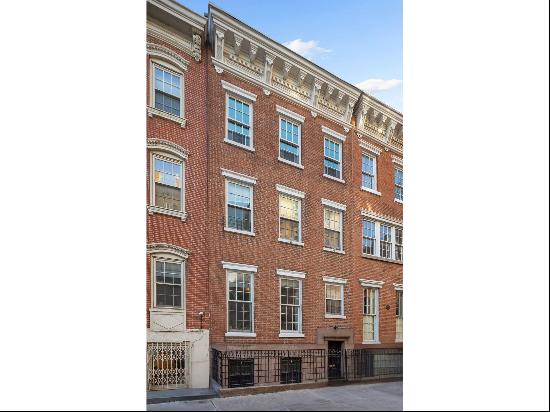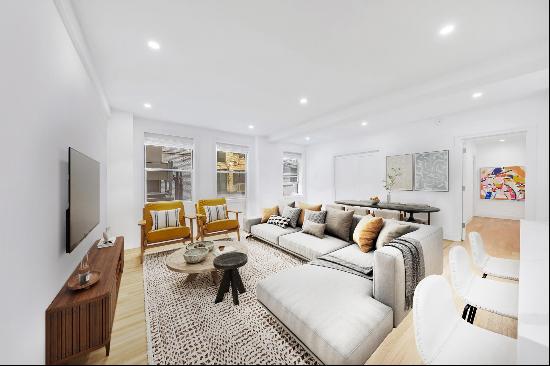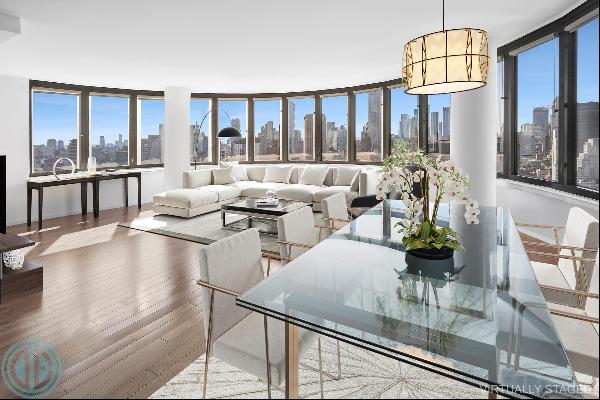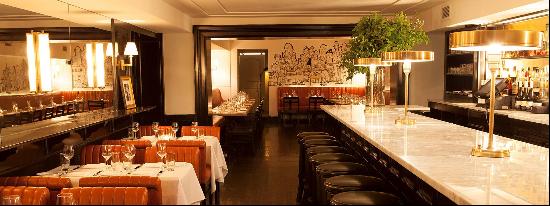
By Edwin Heathcote
There has always been a bit of tension between Manhattan’s Art Deco and Modernist skyscrapers. Less than two decades separated these architectural movements but the difference between them is stark. There is the exuberance of the city’s great Deco monuments, built in the 1920s and 30s — the Empire State, Chrysler and Rockefeller buildings among them — and then you have the postwar corporate behemoths, led in their ornamental nudity and repetitive detailing by Lever House and the Seagram Building.
The biggest difference can be seen at the top of the buildings. While the Art Deco skyscrapers celebrated their height with spiky crowns and spires, the Modernists abruptly terminated these perfect, uniform slabs with a simple flat roof. A new residential building on Manhattan’s Upper West Side, designed by the Portuguese architect Álvaro Siza, seems to have finally resolved the conflict between the two styles.

Siza, now 89, made his career in his native Porto, building a series of houses and public buildings that were at once remarkably subtle and modest in means and the product of incredible architectural invention. His early houses have become cult places of pilgrimage and his outdoor pool and tea house at Boa Nova (1958-63) are among the most revered small works in the postwar architectural canon. More recently, he spread his wings with works from Argentina to South Korea, but he remains known for his usually white, always enigmatic, stripped-down, elemental architecture.
Siza never particularly dreamt of designing in Manhattan and yet, approached by developers Sumaida + Khurana and LENY to design a tower at 611 W 56th Street, he has built something special.

The 35-storey building appears radically different depending on how you approach it. Seen from the east, it looks impossibly slender but from Downtown it has a far greater presence on the skyline. Not for Siza the flashy headgear and tapering turrets of Deco. He has placed a tall white box on top of his tower that is not so much a crown, more of a paper hat. And it is exquisite. The sun makes the pale Perla Bianca limestone of the box glow as if it is a piece of abstract sculpture — a Donald Judd, perhaps. It gives a nod to Manhattan’s Deco vernacular, in the way the chunkier base tapers to a slender shaft and there is perhaps a slight intimation of Raymond Hood’s 1931 McGraw Hill Building in its profile, but it is only the faintest of echoes.
The most striking part of the building’s design is the use of corner windows. From outside, they cause the tower to dematerialise, so that it appears almost impossibly light — a trick that helps the building look less substantial than the surrounding glass curtain-walled structures. From inside, the corner windows define the experience of the spaces.

The interiors, designed by Gabellini Sheppard, are cool and light, with plenty of exquisitely grained marble — nothing to distract too much from the views across the city and over the Hudson and the piers, which seem to be protected for a while at least. The apartments range from one to four-bedroom and the penthouse (tucked beneath that minimal crown) has an astonishing terrace that wraps around the block with the tall white box cantilevered out to act as canopy.
This is a building whose context is developing. The plumbing supply stores and car dealerships of the neighbourhood might not last much longer, but the slender brick chimney of the IRT Powerhouse (which once powered the city’s transit) makes a fine industrial counterpoint to Siza’s elegant tower. Near neighbour BIG’s VIA 57 West apartments is perhaps more of what’s about to come: a huge pyramidal building that has disrupted the gridded nature of the skyline, the bulk of which makes Siza’s structure look extraordinarily elegant. Against the dark mass of its neighbours, 611 stands out like a gleaming crystal in a geode.

Siza might never have been expected to design a Manhattan tower (this, surprisingly, is his first US building) but he has done well. There are arguments that importing starchitects like this for luxury projects is a kind of vanity commission that changes the meaning of the skyline. I have some sympathy with the suggestion. Here, however, Siza has designed a more refined and impressive tower than I have seen in the city for years; one, arguably, more literate in its influence and finesse than those by even the most revered New York architects. Developers Sumaida + Khurana, who have also worked with Tadao Ando on the exquisite 152 Elizabeth Street, are solidly proving the worth of working with Pritzker Prize-winning architects. This, in a market where location might otherwise often matter more than design.
Photography: Joao Morgado; Antonio 1962/Dreamstime.com; Evan Joseph





















